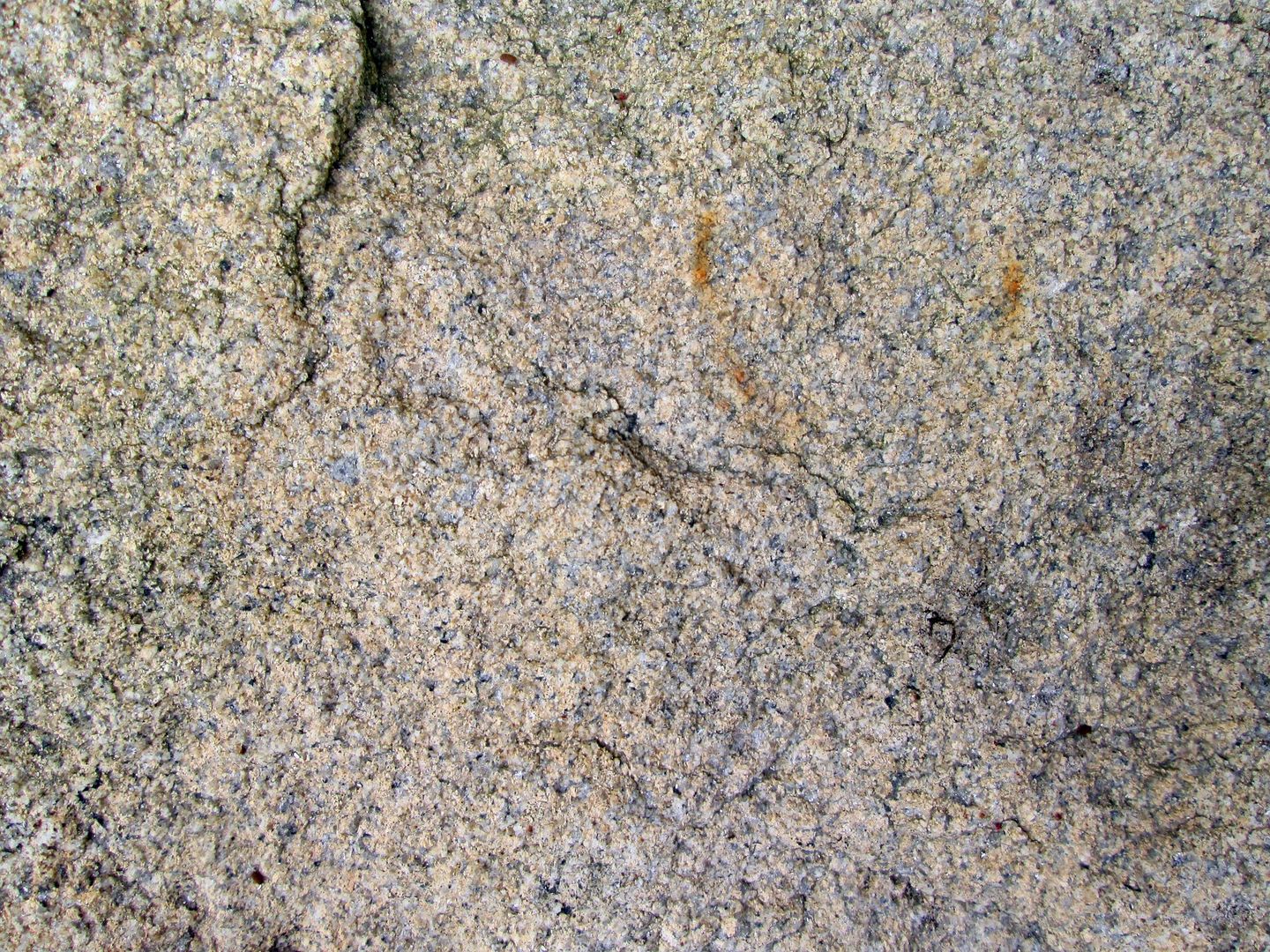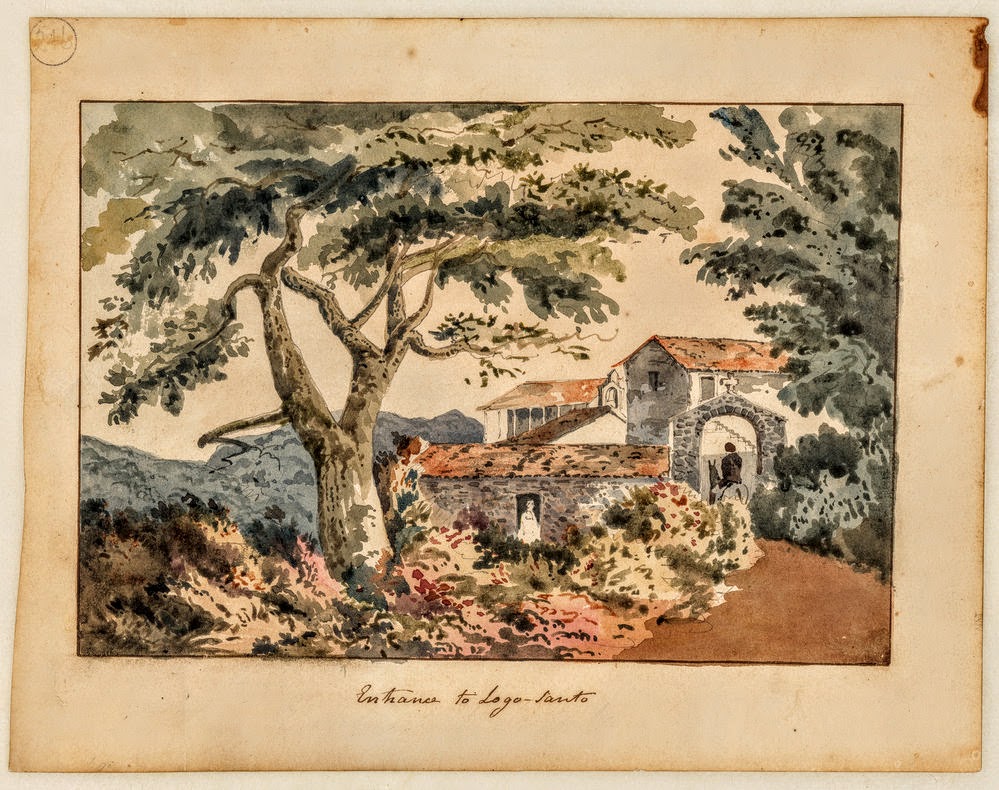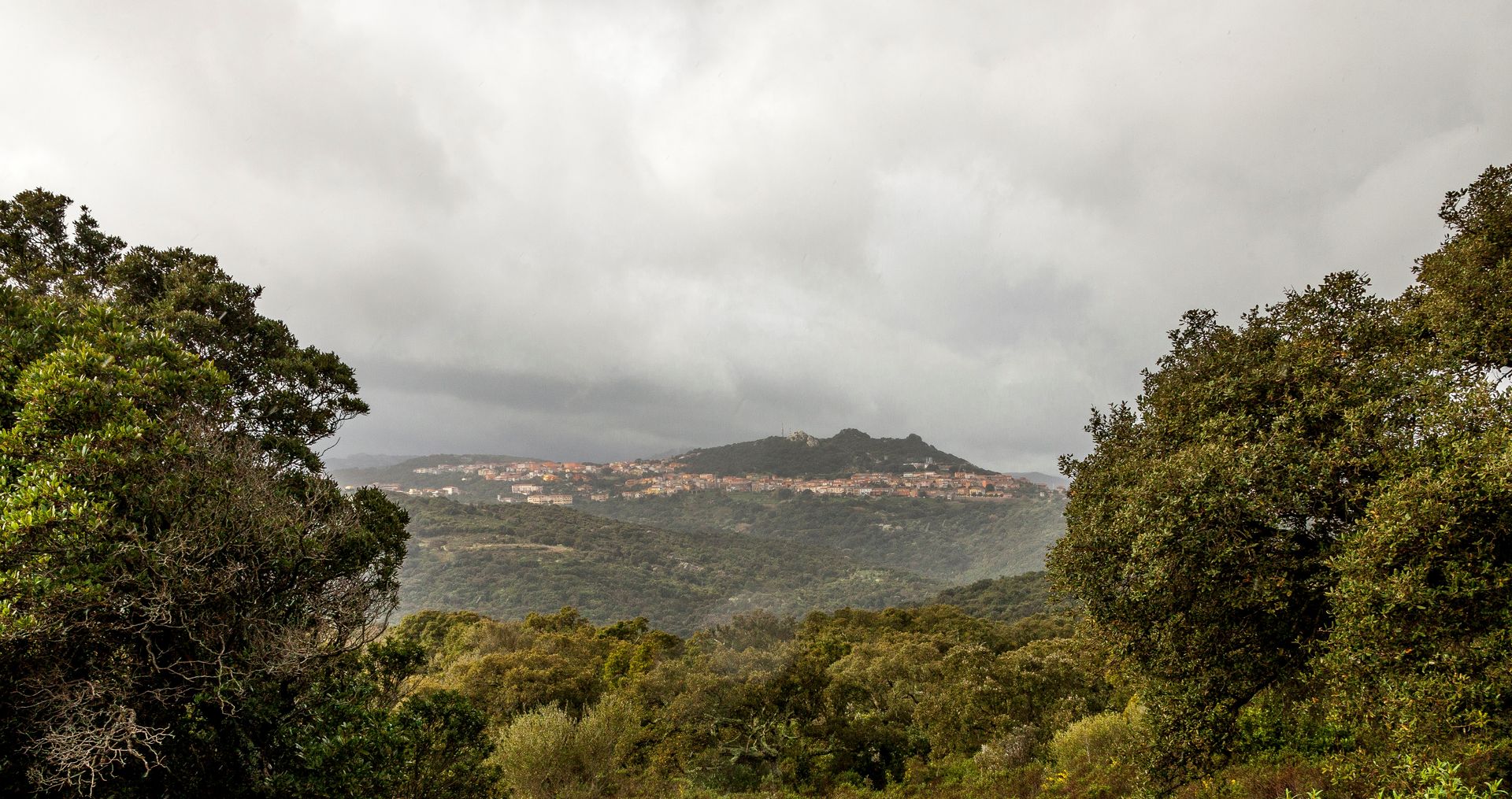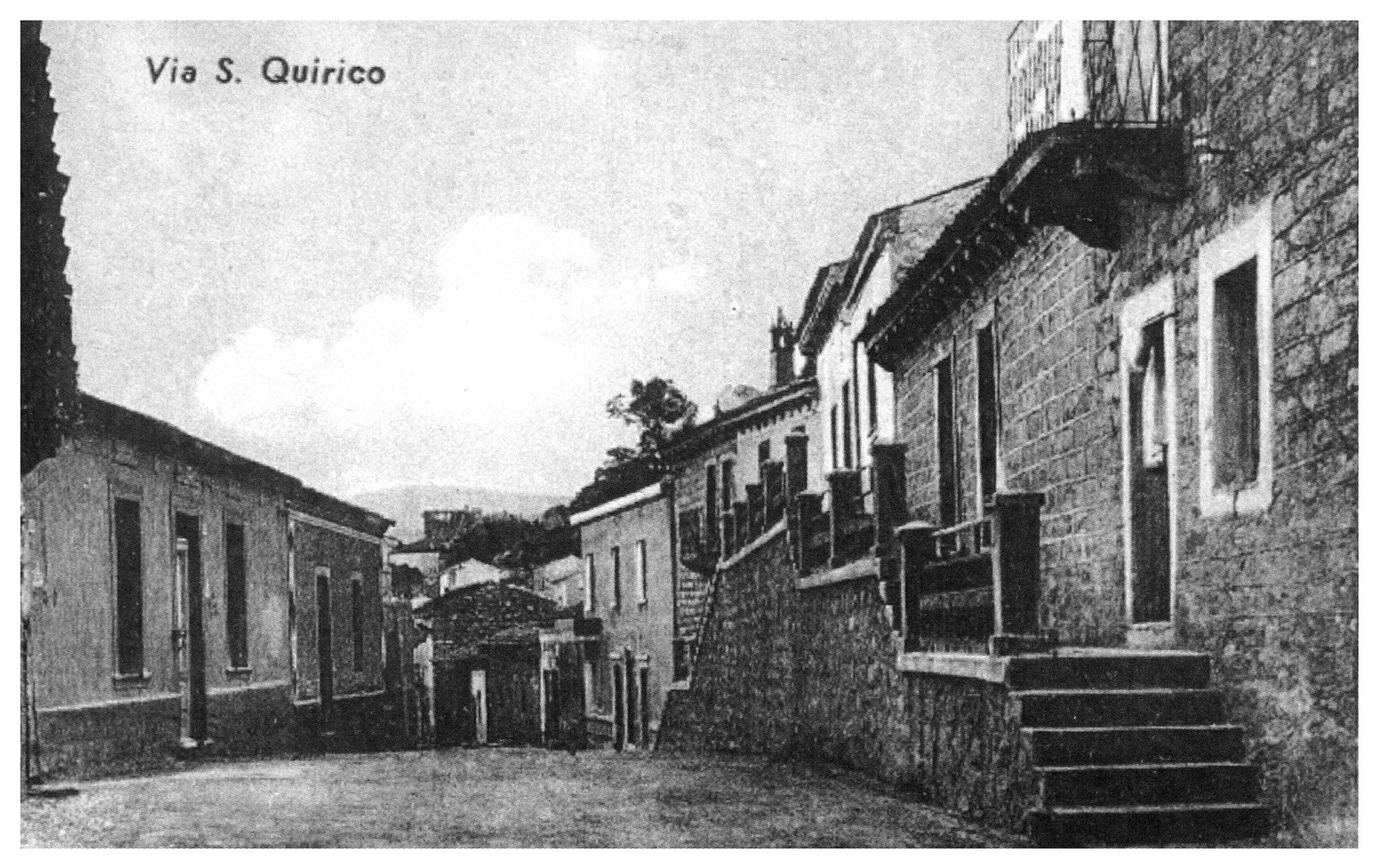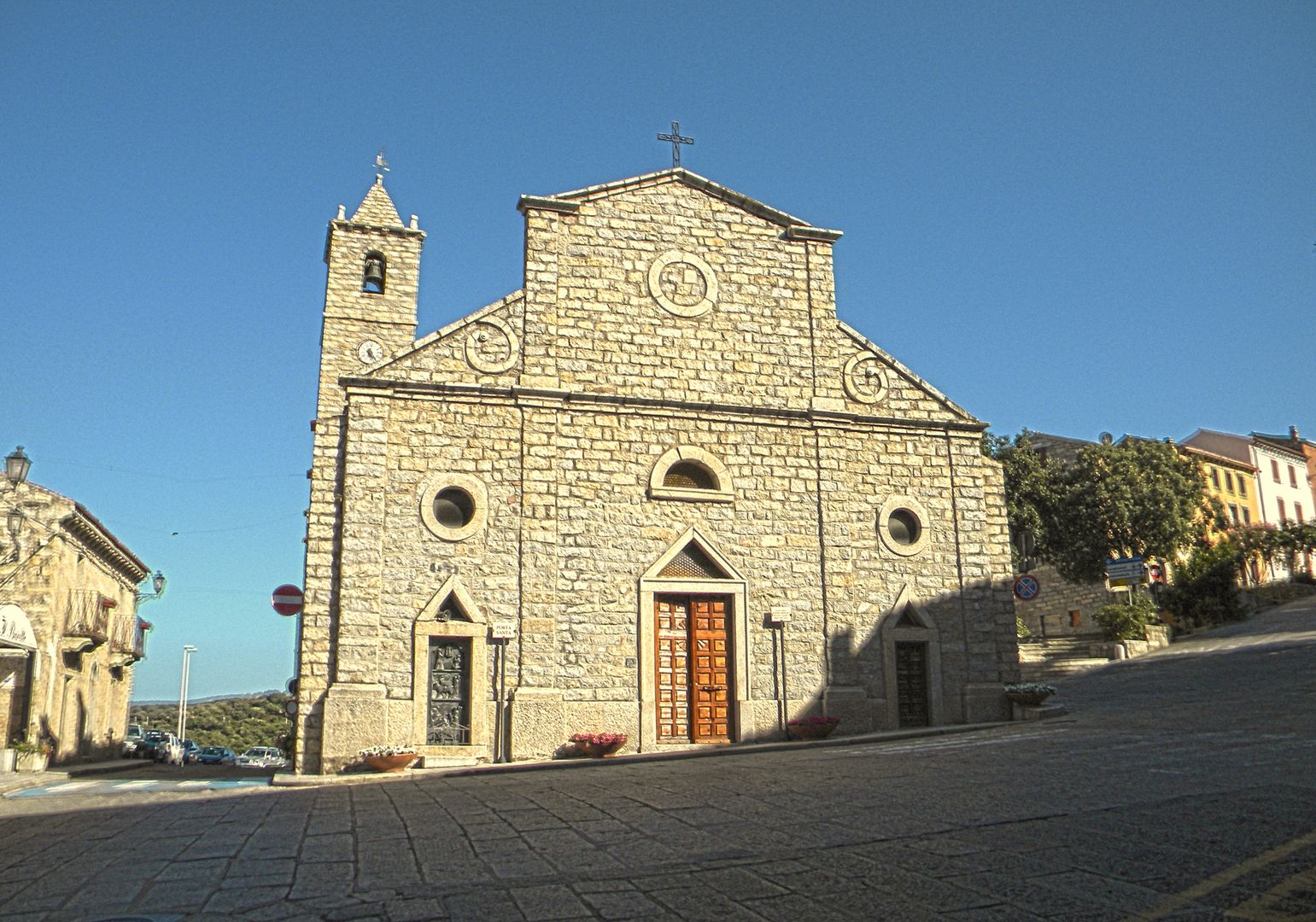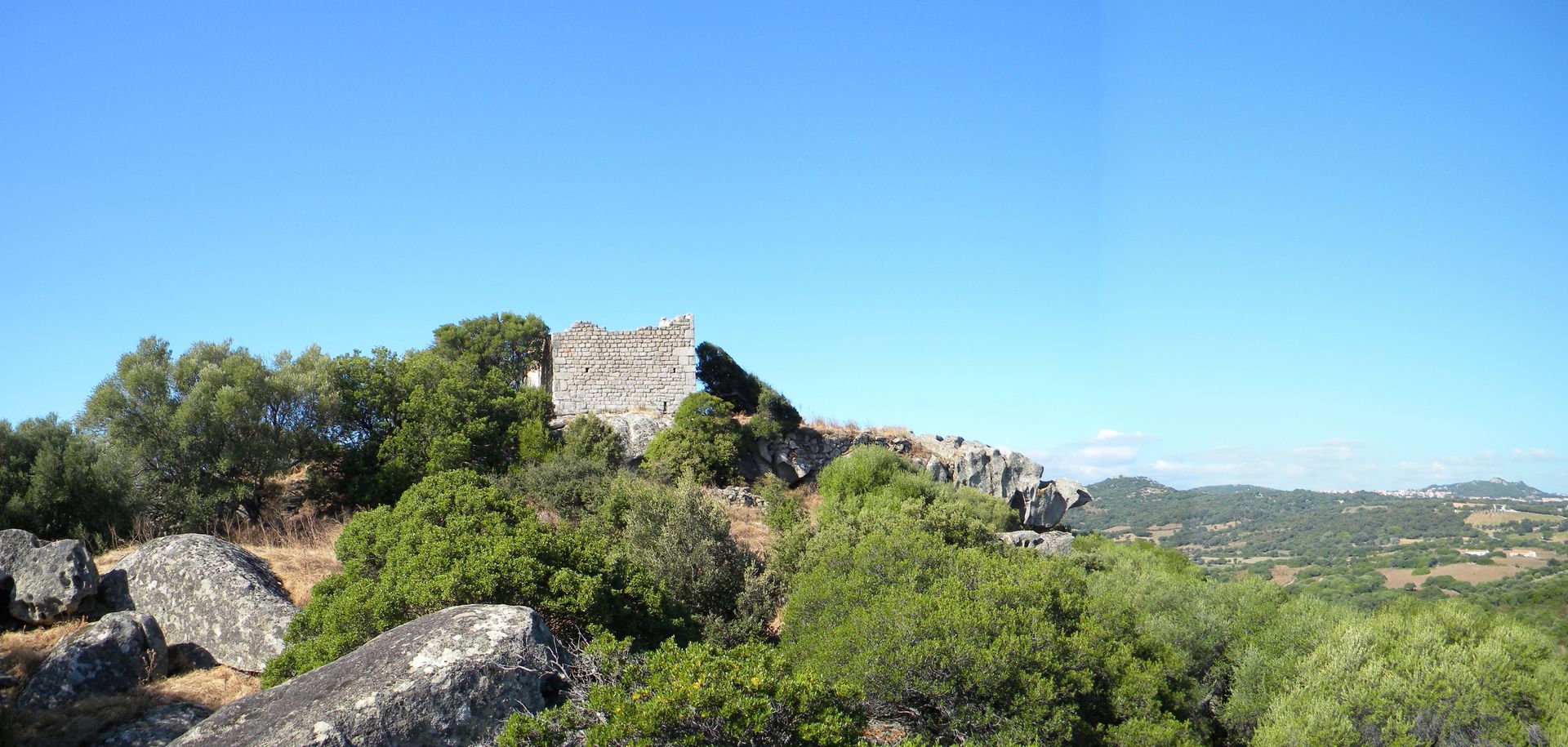LUOGOSANTO
by John Warre Tyndale
The Island of Sardinia
London 1849
Richard Bentley, New Burlington Street
Publisher in Ordinary to Her Majesty
in italian: ![]()
From decomposition and masses falling in chaotic confusion, caverns and recesses are formed of considerable size; and the shepherds, as at Luras, have not failed to attribute their formation to the giants.
In several instances continuous chambers were formed by these detached masses, some of which measured 80 feet long, 60 broad, and as many in height.
In the interstices and crevices, shrubs and plants of various kinds were blooming in richest verdure, and among them the Sedum Heptapedalum by its peculiarly bright, rosy tint, gave a warmth and beautiful contrast to the cold surface where it grew. It seemed to be a different species of the plant generally found on mountains, and is here used by the natives as a specific for sores and scrofulous complaints.
Monte Santu, overhanging the village of Logu Santu, is the Mecca of the Gallurese.
To those not possessing a requisite share of devotion, the “religio loci” does not offer a sufficient inducement to make a pilgrimage to it; but the traveller having any devotion to the works of nature, will be amply repaid by the magnificent view which the
mountain commands over the whole country, as well as by the intrinsic beauty of the position of the village.
At the summit of the mountain is a small chapel, scarcely visible amid the dark verdure of the forest in which it is concealed; and it has nothing to compensate for a very steep ascent, except the charm of its situation.
Before entering the village we should hear a little of the legend which has sanctified it, and forms so conspicuous a part in the religious creed of the people. The Sarde historians and ecclesiastics have found the subject a fruitful source of discussion and inquiry, and, amid all the contradictory accounts, it is difficult to discover which is the least absurd.
Without questioning the veracity of one of the statements – that Logu Santu derived its name from St. Paul having preached there – we may merely take the substance of a document written in Sarde, and addressed by the archbishop to the ecclesiastical corps in the year 1519.
Two Franciscan monks happened to be at Jerusalem, and while there, the Virgin Mary appeared to them in a dream, and commanded them to go to Sardinia; assuring them that in a certain secluded wood in Gallura they would find the bodies of St. Nicholas and St. Trano, who were anchorites and martyrs about the year a.d. 362. The Virgin then disappeared, the monks came to Monte Santu, and found the bodies in 1219, and by the contributions of the pious, built three churches, one to the Virgin, and two to the saints. From that period the holiness of this place has been as thoroughly acknowledged as the reality of the bones.
In recompense for the miraculous revelation, three Feste, the most important in Gallura, are celebrated in honor of the Virgin, and of the Sts. Nicholas and Trano, on which occasions all the neighbouring communes march in procession with their banners and music, headed by the canons and dignitaries of the cathedral of Tempio; and after the usual religious ceremonies the fasting and praying are converted into feasting and dancing.
The village, consisting of some thirty or forty little cottages, is surrounded by a wall in a ruined state. The space enclosed was formerly deemed so holy, that no animal was
allowed to go inside the gates, ”nemmeno un polastro”, as the civil and hospitable cure told me; but the sanctity of bones has been succeeded by the impiety of the fowls of the air, and the beasts of the field, various kinds of which were wandering over the Terra Santa with perfect impunity.
The two other churches dedicated to St. Nicholas and St. Trano are small ruins and not worth inspection; “meschinissime cappelluccie”, as they are rightly called; and the Franciscan convent, once famous for its endowments, has disappeared.
Without feeling the transports of the Sarde historian,11/14 Gemelli, who calls the village, “locum, inquam, vere sanctum, sanctitatemque undique redolentem”, “a spot which I may call truly holy, and redolent with holiness, all around”, the traveller will be charmed with its natural beauty and scenery.
The remains of the castle are few, its greatest side being only about 50 feet; though its outlines and fortifications are extensive and include a small chapel and cistern.
SOURCES OF ILLUSTRATIONS
William Light, Entrance to Logosanto; Logo Santo, 1829. On Light see Here.
19th Century Paintings, Drawings and Lithographs (captions translated freely)
Philippine de la Marmora, “The ancient church of N. Signora near the capital of Gallura [to Luogosanto]”, ca 1854-1856, IN Luigi Piloni, Memorie sulla terra sarda: tempere inedite di Philippine de la Marmora (1854-1856), Cagliari, Fossataro, 1964.14/14
Postcards and Photos, Late 19th/Early 20th Century
collezione Mario Scampuddu, Vittorio Ruggero
Contemporary Photos
Antonio Concas – Flickr, Danilo Loriga – Flickr, Gianni Careddu – CC BY-SA 4.0, commons wikimedia, pixabay.com, Aurelio Candido – Flickr
Stefanie Gehrig – Flickr, Marianna Pilo – Flickr, Gianni GDO – Flickr, Riccardo Mura










